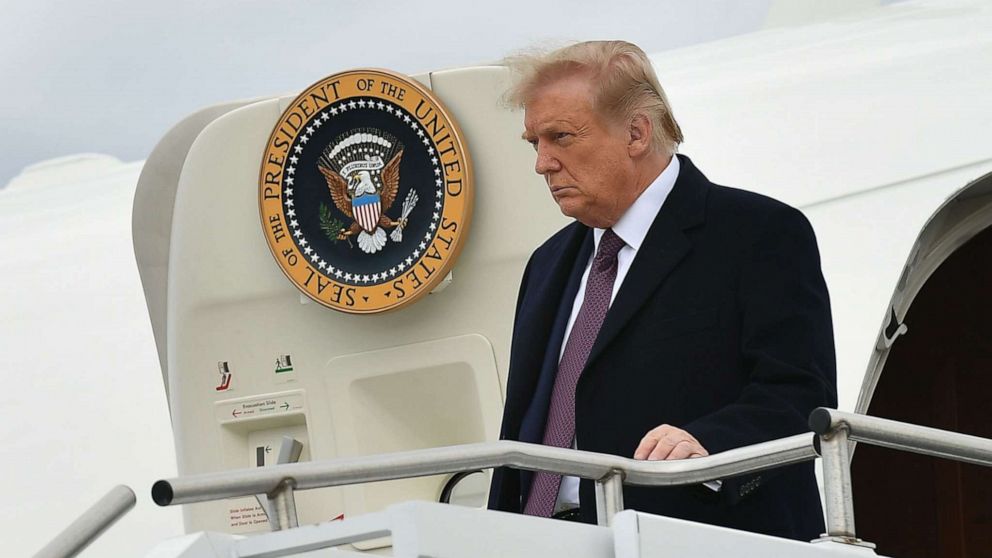Tracing Trump's movements: A timeline of the days leading up to his COVID diagnosis
President Donald Trump, in overdrive on the campaign trail just a month before the election, had a schedule packed with events and official government business in the week prior to his COVID-19 diagnosis, repeatedly putting himself in close proximity with throngs of supporters, agency heads and White House aides.
An ABC News review of the president's public calendar in the days leading up to his diagnosis, which he revealed early Friday morning in a tweet, shows him face-to-face with reporters, side-by-side with Gold Star families and hobnobbing with donors -- frequently without social distancing or wearing masks. This follows a pattern for his events throughout the pandemic.
"Given the sheer volume of potential contacts of the president over the days ahead of his diagnosis, public health officials should be very worried about the emergence of a super-spreading event," said John Brownstein, Ph.D., a Harvard epidemiologist with Boston Children's Hospital and ABC News contributor, referring to an instance in which the number of cases transmitted is disproportionately higher than normal.
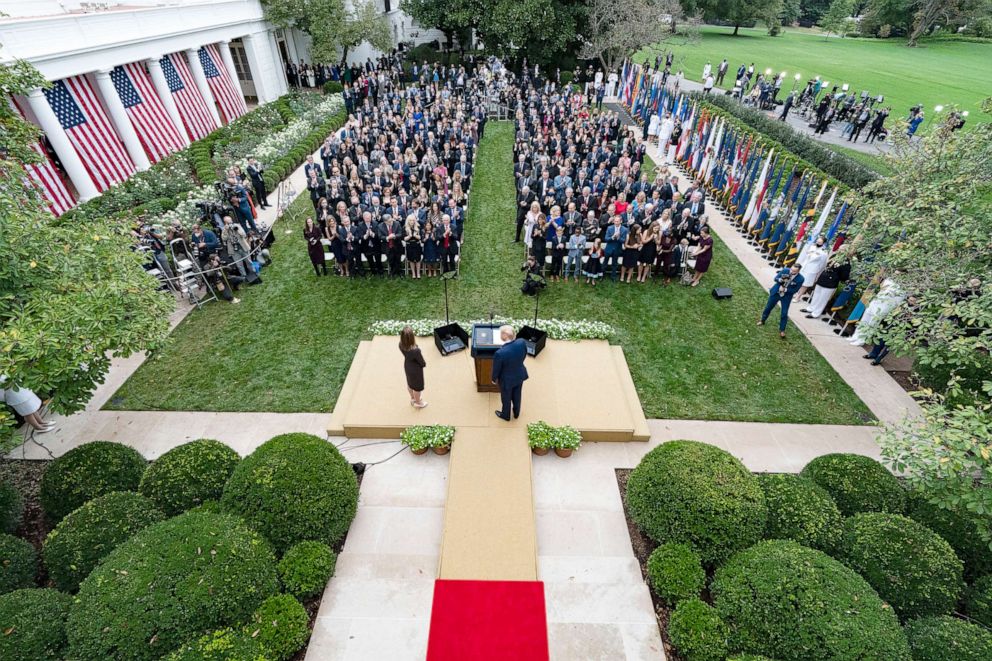
On Friday, before the president was taken to Walter Reed Medical Center, White House chief of staff Mark Meadows said Trump was already experiencing "mild symptoms," suggesting that the president may have been infected days earlier, Brownstein said -- and presenting the possibility that he may have transmitted the disease to others while asymptomatic. Transmission has been known to occur two to three days before patients show symptoms, if any.
"As the president was likely infectious by Tuesday if not earlier, all those that have been in close proximity from that time should be in quarantine regardless of a negative test at this time," Brownstein said. "Those who have been in contact with the president must proceed with extreme caution."
In light of the president's interactions with a broad cross-section of people and communities during this time, his positive test threatens to extend far beyond the West Wing, to states and cities he visited in recent days. Here is ABC News' attempt to trace Trump's public contacts over the past week:
Saturday, Sept. 26

A White House ceremony at which Judge Amy Coney Barrett was nominated to replace the late Justice Ruth Bader Ginsburg on the Supreme Court is quickly emerging as a possible super-spreader event, Brownstein said, with at least five attendees now having tested positive.
At the Rose Garden, the president welcomed several lawmakers, administration officials and emissaries from the University of Notre Dame, where Barrett taught law for several years. Images and footage of the audience show tightly packed seating and only sporadic use of masks.
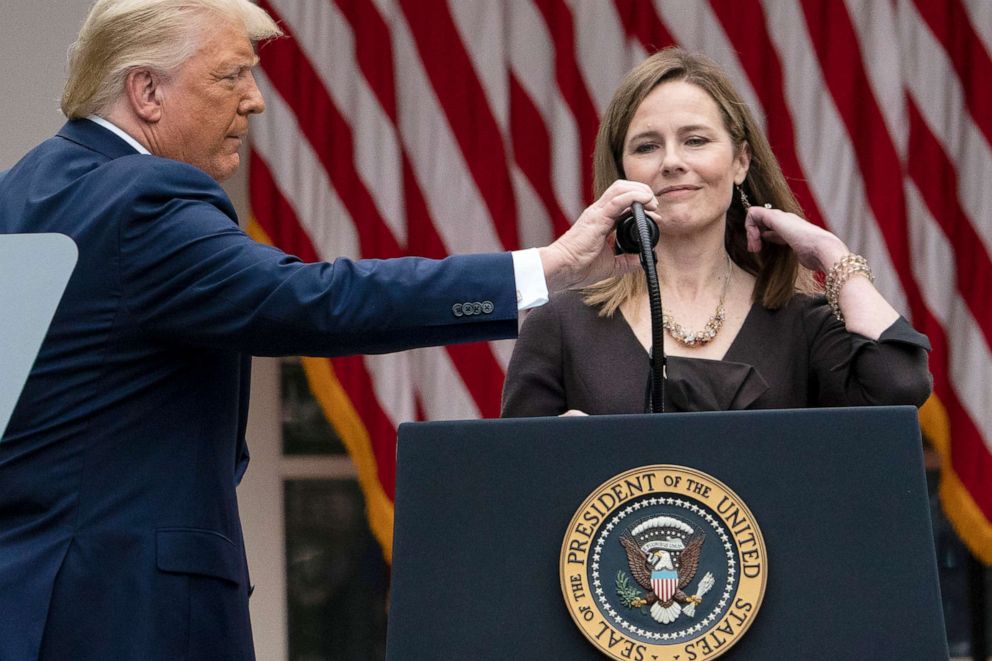
Sources familiar with the event told ABC News that not all attendees were tested prior to entry -- only those who were expected to have direct contact with the president.
In addition to the president and first lady Melania Trump, attendees who have since tested positive include Sen. Mike Lee, R-Utah and president of Notre Dame, Rev. John Jenkins. Former senior adviser to the president Kellyanne Conway tweeted late Friday that she tested positive. In a tweet Saturday morning, former New Jersey Governor Chris Christie stated his tested positive.
abcn:image index=[4] align=[full]/>
Brownstein said the number of positive cases emanating from the event "raises some real concerns about the timeline of cases and the broad risk to the community."
"If this event turns out to be the source of infection," he said, "the concern is now we are likely secondary infections from those initial cases creating the starting point for a major super-spreading event.
Others in attendance, including Barrett, Vice President Mike Pence and Attorney General William Barr, said Friday that they had tested negative.
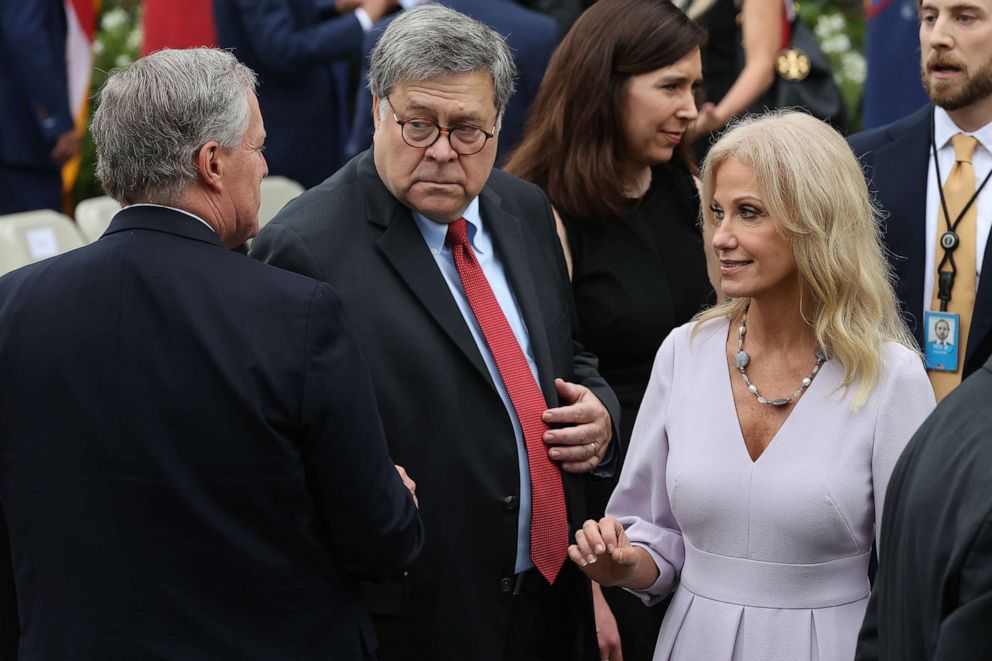
Hours later, the president traveled to a campaign rally in Middletown, Pennsylvania, where several thousand supporters greeted Air Force One at an outdoor hangar. The president was joined on Air Force One by White House adviser Hope Hicks, who tested positive for the virus on Thursday.
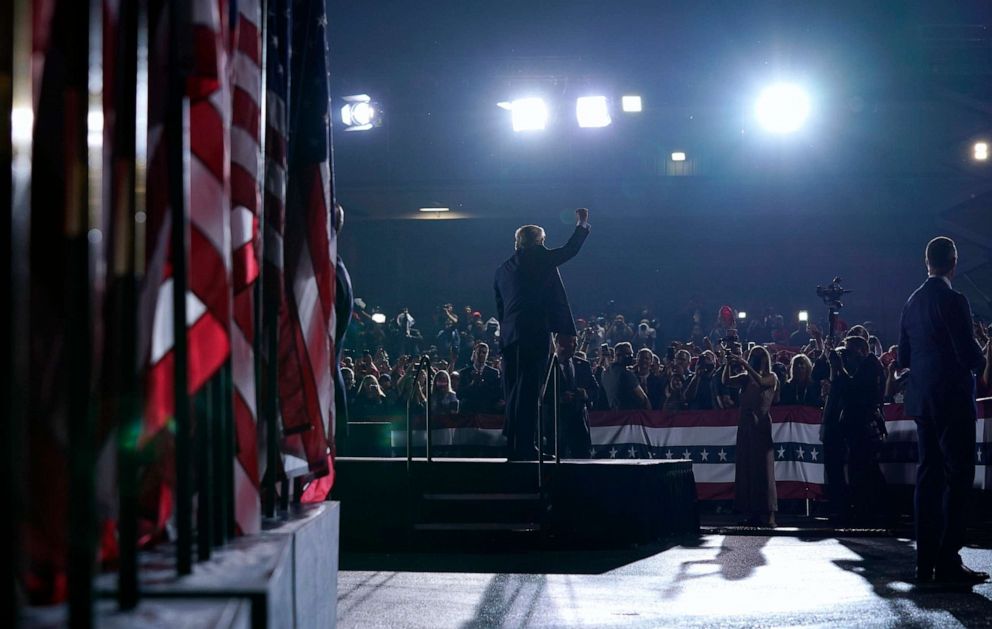
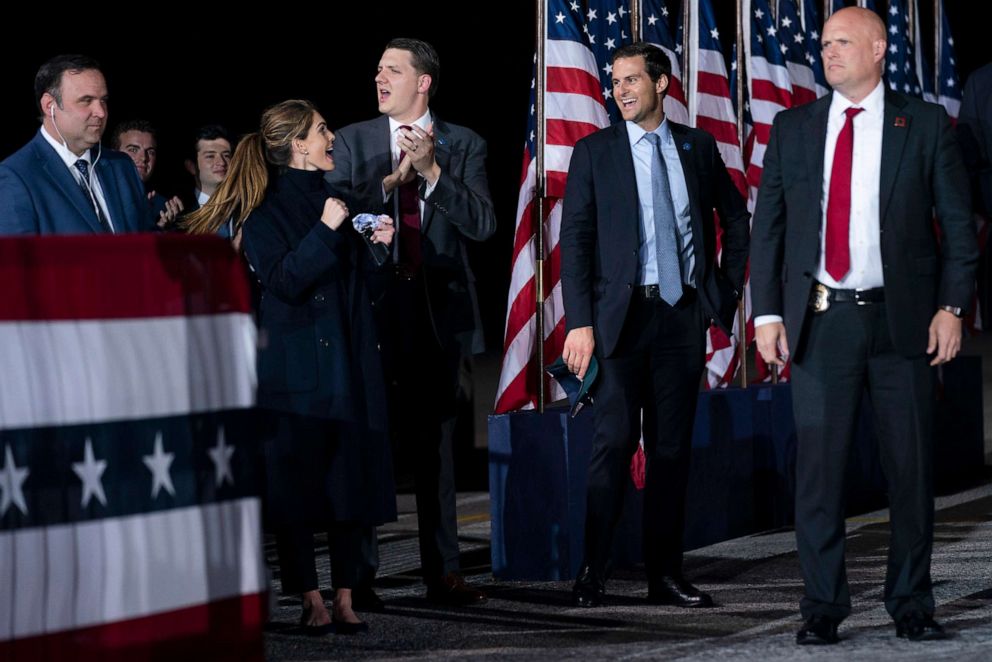
On Friday, the Pennsylvania Department of Health encouraged attendees of the Middletown rally to download its contact-tracing app.
"If you test positive, you can alert those you came in close contact with anonymously through the app," the department said.
Sunday, Sept. 27
On Sunday, Trump held a briefing at the White House.
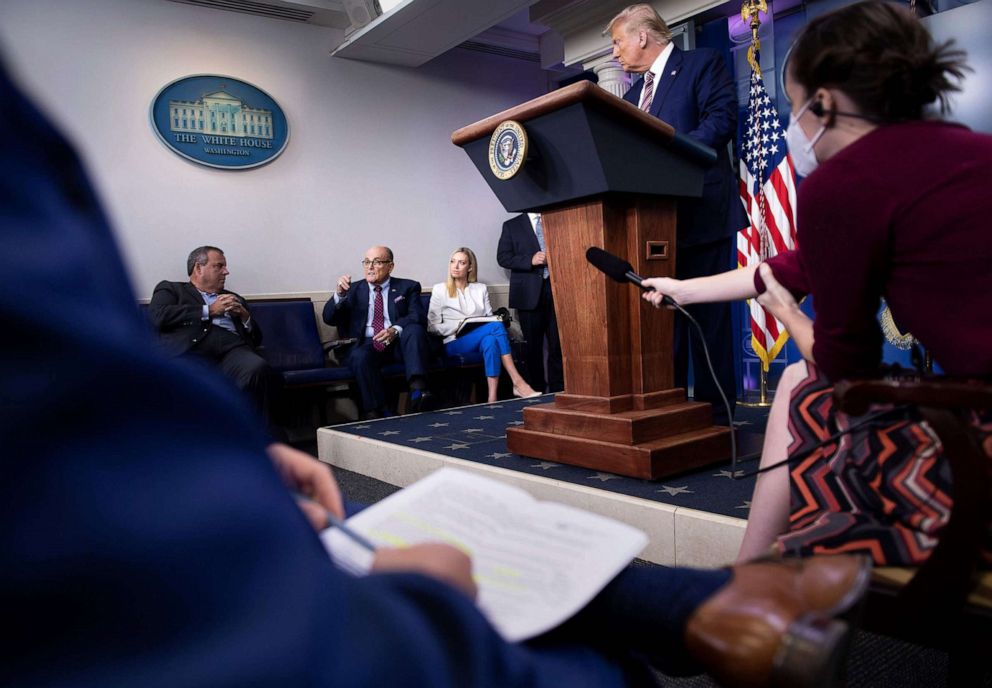
He also hosted Gold Star Families in the East Room of the White House, an indoor setting where the president, several senior advisers and Pentagon leaders were photographed without masks in close proximity.
On Friday, a Pentagon spokesperson confirmed that Defense Secretary Mark Esper and Chairman of the Joint Chiefs of Staff Mark Milley attended the event. On Monday and Wednesday, the spokesperson said, Esper tested negative for the virus, but he'd be tested again on Friday.
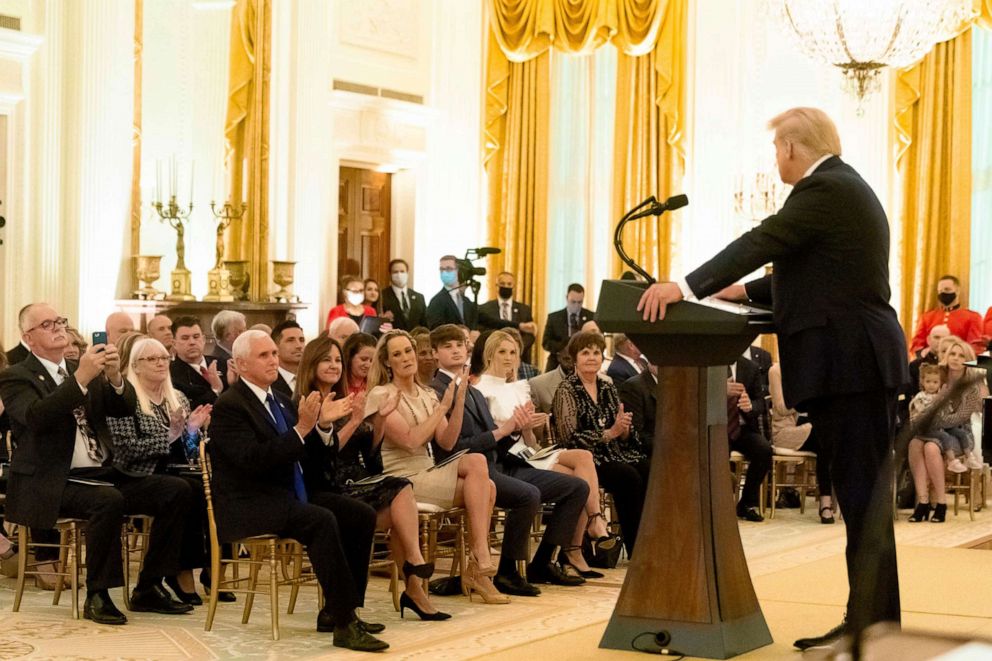
Prior to the Gold Star event, Trump hit the links at his Sterling, Virginia, golf course. As of Friday, Oct. 2, it was not clear whether any attendees had contracted the disease.
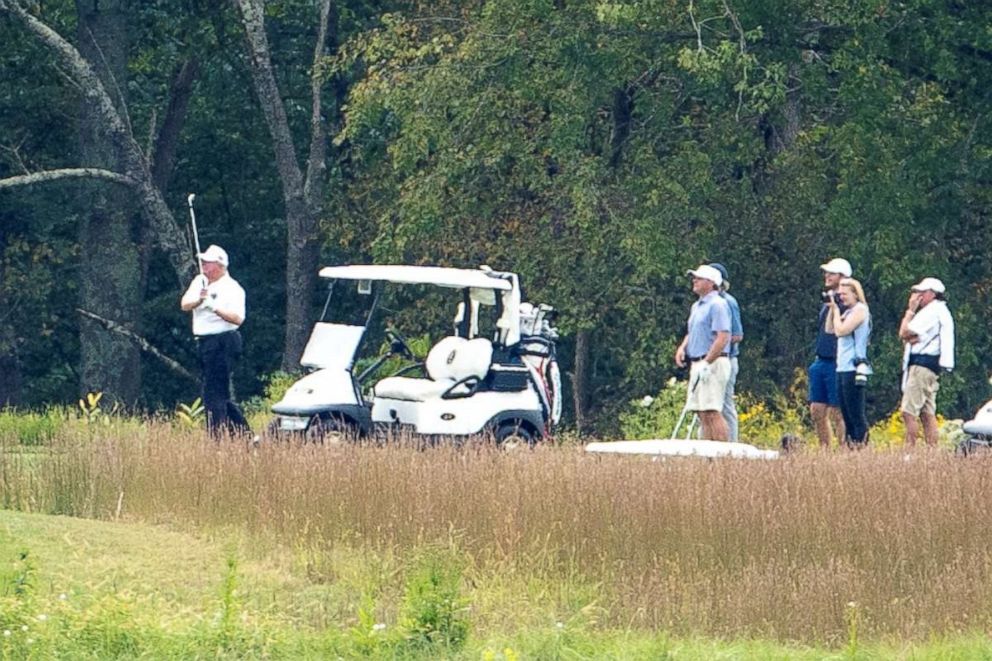
Monday, Sept. 28
During an impromptu event on the South Lawn of the White House, Trump summoned reporters while he was checking out the Lordstown Motors 2021 endurance electric pickup truck, an opportunity for him to focus on the return of manufacturing to Ohio, a key battleground state.
The president was joined by White House trade adviser Peter Navarro, Sen. Rob Portman, R-Ohio, Rep. Mike Turner, R-Ohio, and three Lordstown employees, including CEO Steve Burns – none of whom wore masks or observed social distancing.
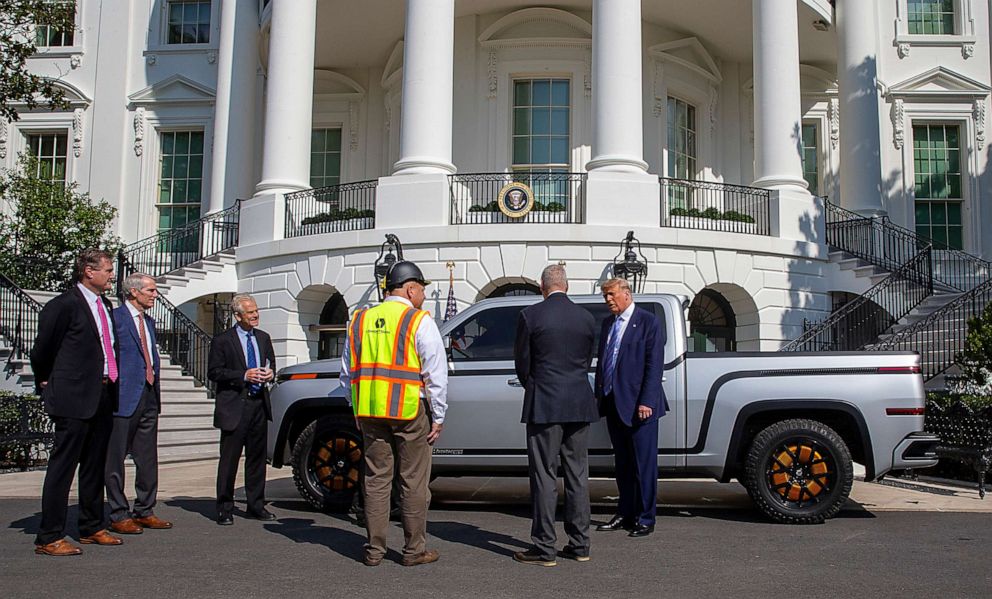
In the afternoon, the president returned to the Rose Garden for a press conference updating Americans about his administration's coronavirus response, which featured several senior administration officials, including Pence, Health and Human Services Secretary Alex Azar, and Adm. Brett Giroir, the administration's testing czar. Some attendees wore masks, but not the president. While Giroir awaited the president, he donned a mask, but removed it when it was his turn to speak.
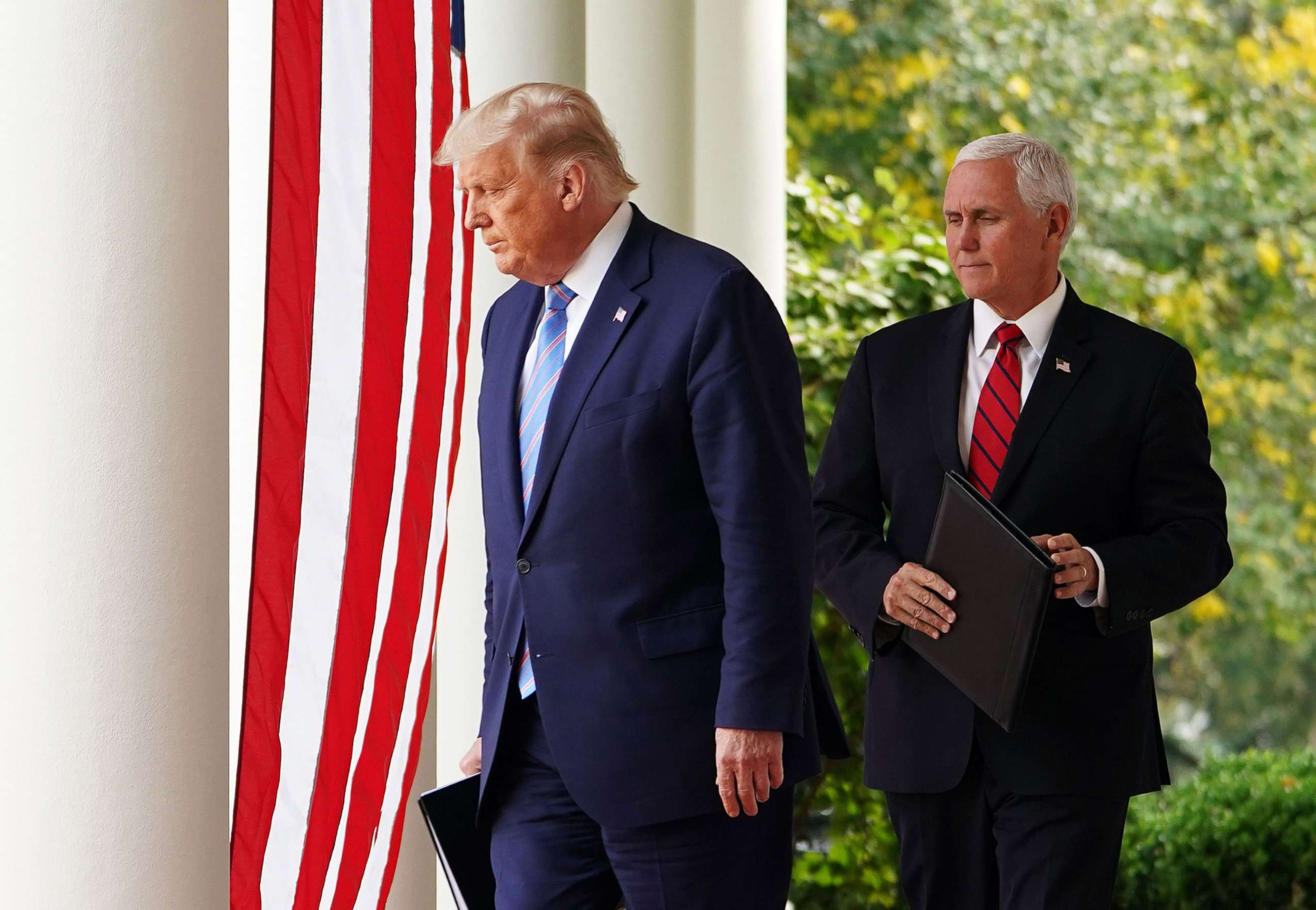
Azar tested negative for the virus on Friday. Giroir said he has tested negative twice since Wednesday.
Tuesday, Sept. 29
The day of the highly anticipated first presidential debate, Trump held no public events until departing the White House for the event venue in Cleveland. Once on stage, the president jousted with former vice president Joe Biden over his administration's response to the coronavirus and mocked Biden's use of a mask.
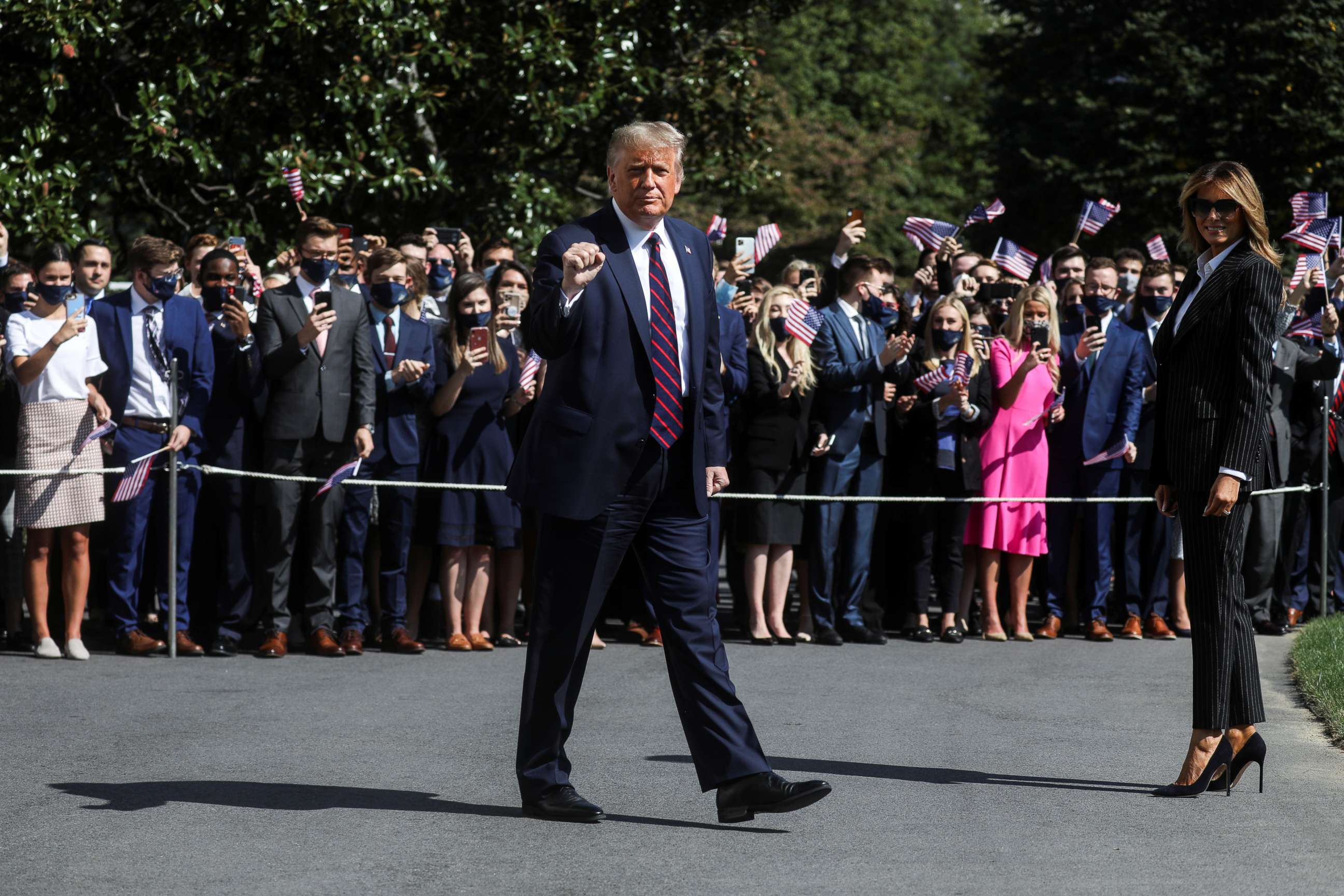
"I don't wear masks like him," Trump said. "Every time you see him, he's got a mask. He could be speaking 200 feet away from it, and he shows up with the biggest mask I've seen."
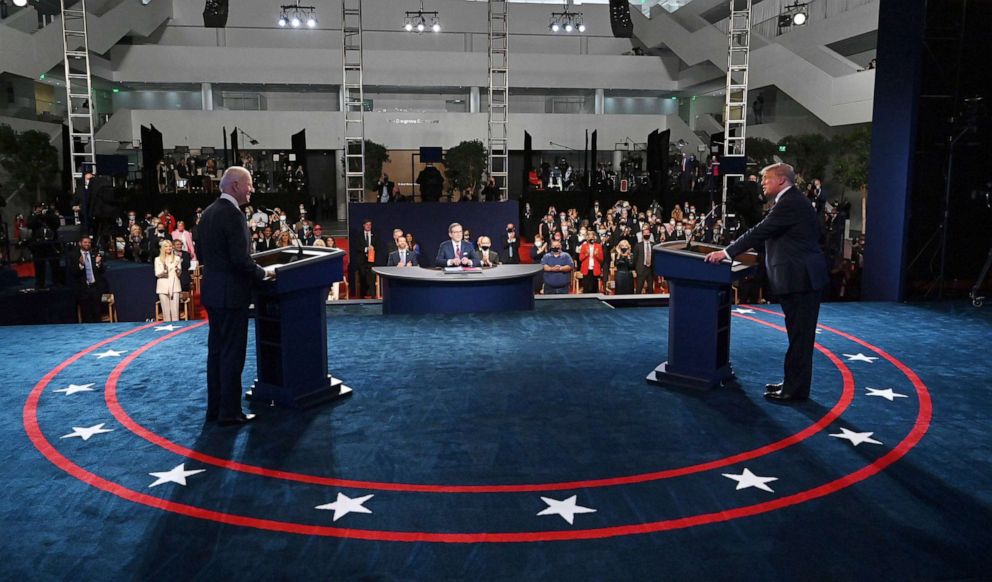
The president has repeatedly claimed that his outdoor rallies pose little threat to attendees. During Wednesday's debate, he said there have been "no negative effects" on public health traced back to his rallies.
In the audience, a pool reporter noted that several of the president's guests -- including members of his family -- arrived wearing masks, but took them off once seated. The reporter added that a Cleveland Clinic physician attempted to approach the Trump family to ask them to wear masks, but was rebuffed by an unidentified campaign staffer.
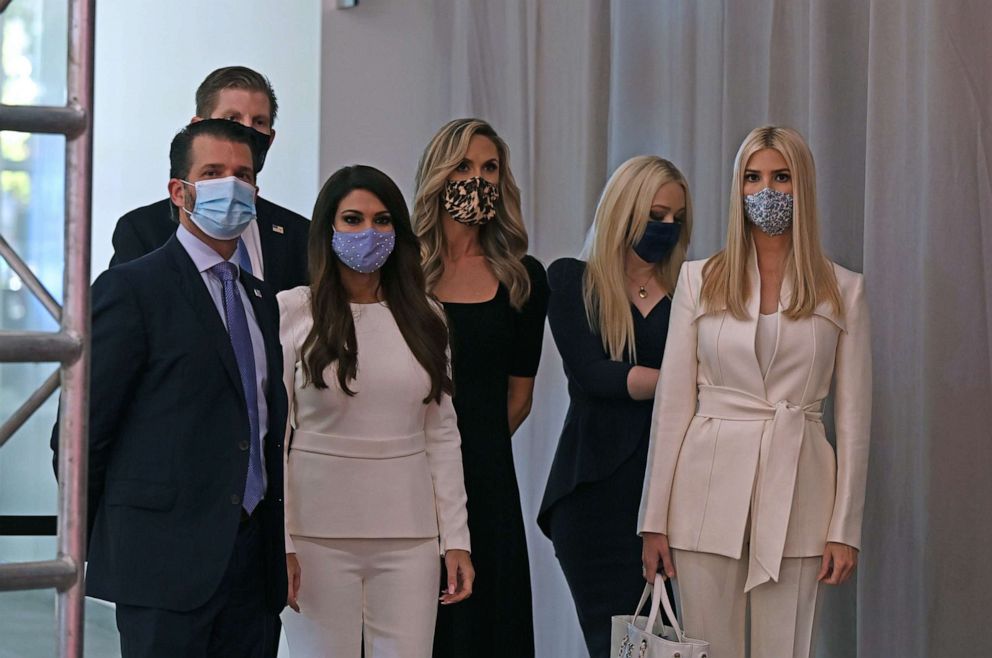
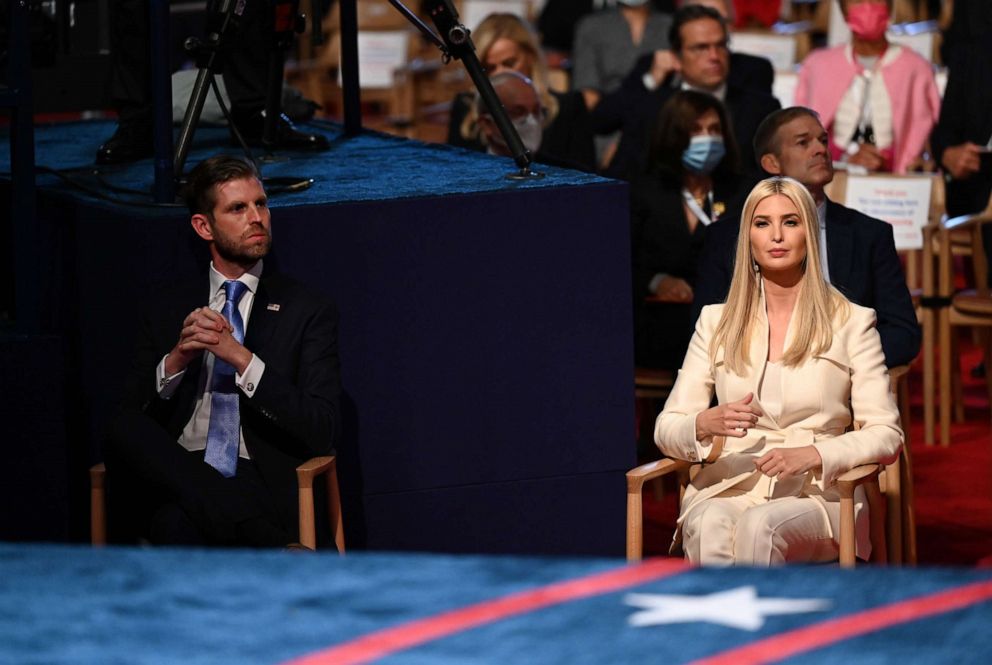
Cleveland Clinic, which hosted the first presidential debate on Tuesday with Case Western Reserve University, said in a statement Friday that they "believe there is a low risk of exposure to our guests," but is reaching out to address their concerns.
Andrea Pacetti, a Cleveland Clinic spokeswoman, confirmed to ABC News that a "physician did offer audience members masks, but some did not adhere to the requirement." She declined to answer questions about why the rules were not enforced.
On Friday, Joe Biden said he and his wife, Dr. Jill Biden, had tested negative. Even so, the incubation period suggests those in attendance, including the former vice president, should remain vigilant.
"While the debate participants were over 6 feet apart, the limited mask wearing and prolonged duration of exposure through heated conversation, we should be deeply worried about the extent of cases that are to come," Brownstein said.
According to Cleveland Clinic, members of Trump and Biden's traveling parties were tested by their respective campaigns before arriving on campus, and received negative tests. All attendees, members of the press and others officials at the venue ahead of Tuesday night received negative PCR tests from the Clinic to gain entry to the hall, which had a maximum capacity of 300 people for the debate.
Chris Wallace, the debate moderator, said on Friday afternoon the two candidates and their campaigns were not subject to the stringent testing rules set out by the Cleveland Clinic, describing their testing protocol as "an honor system."
Wednesday, Sept. 30
The president departed the White House on Wednesday afternoon for Minnesota, where he attended a fundraiser at the suburban Minneapolis home of Cambria CEO Marty Davis before jetting north to Duluth for another crowded campaign rally with thousands of mostly mask-less supporters.
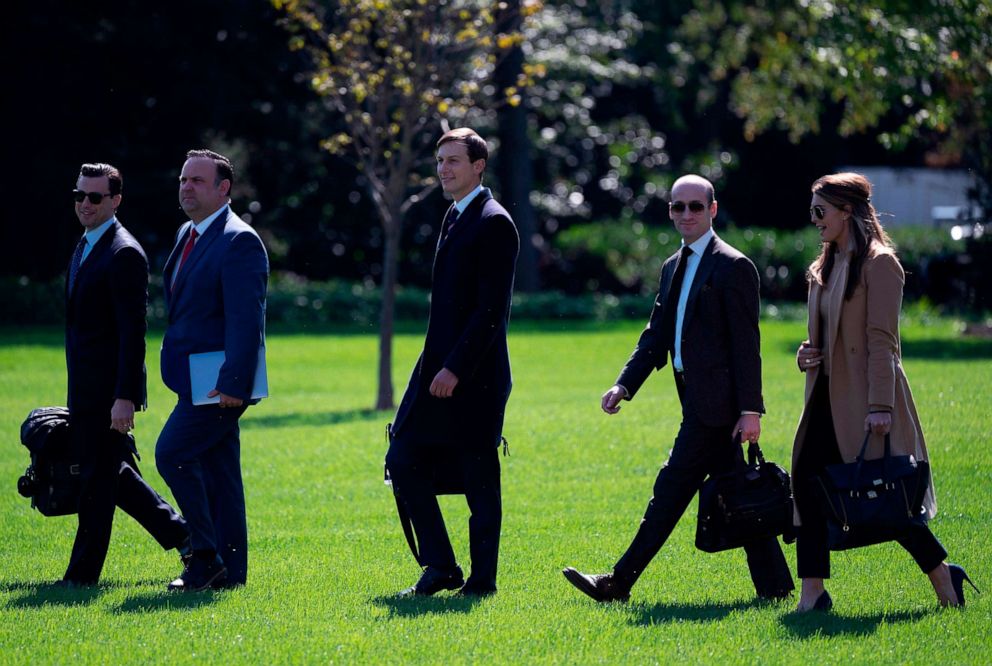
Three Republican lawmakers -- Reps. Jim Hagedorn, Tom Emmer and Pete Stauber -- traveled aboard Air Force One to and from Duluth. On Friday, all three said they received coronavirus tests from the House Attending Physician's office and, as of Friday afternoon, were awaiting results. The Minnesota Republicans voted in person on the House floor Friday, despite recent interactions with White House staff.
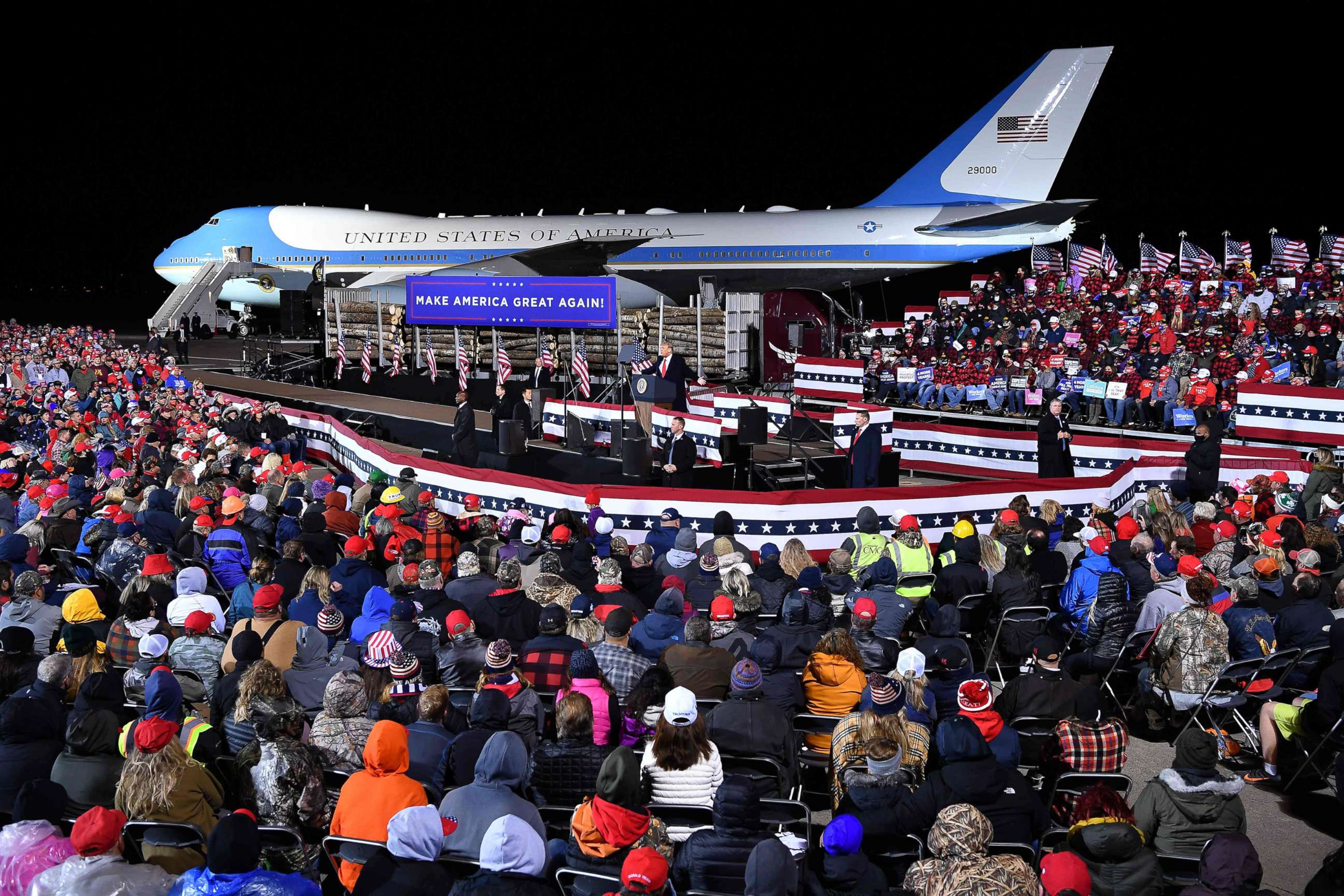
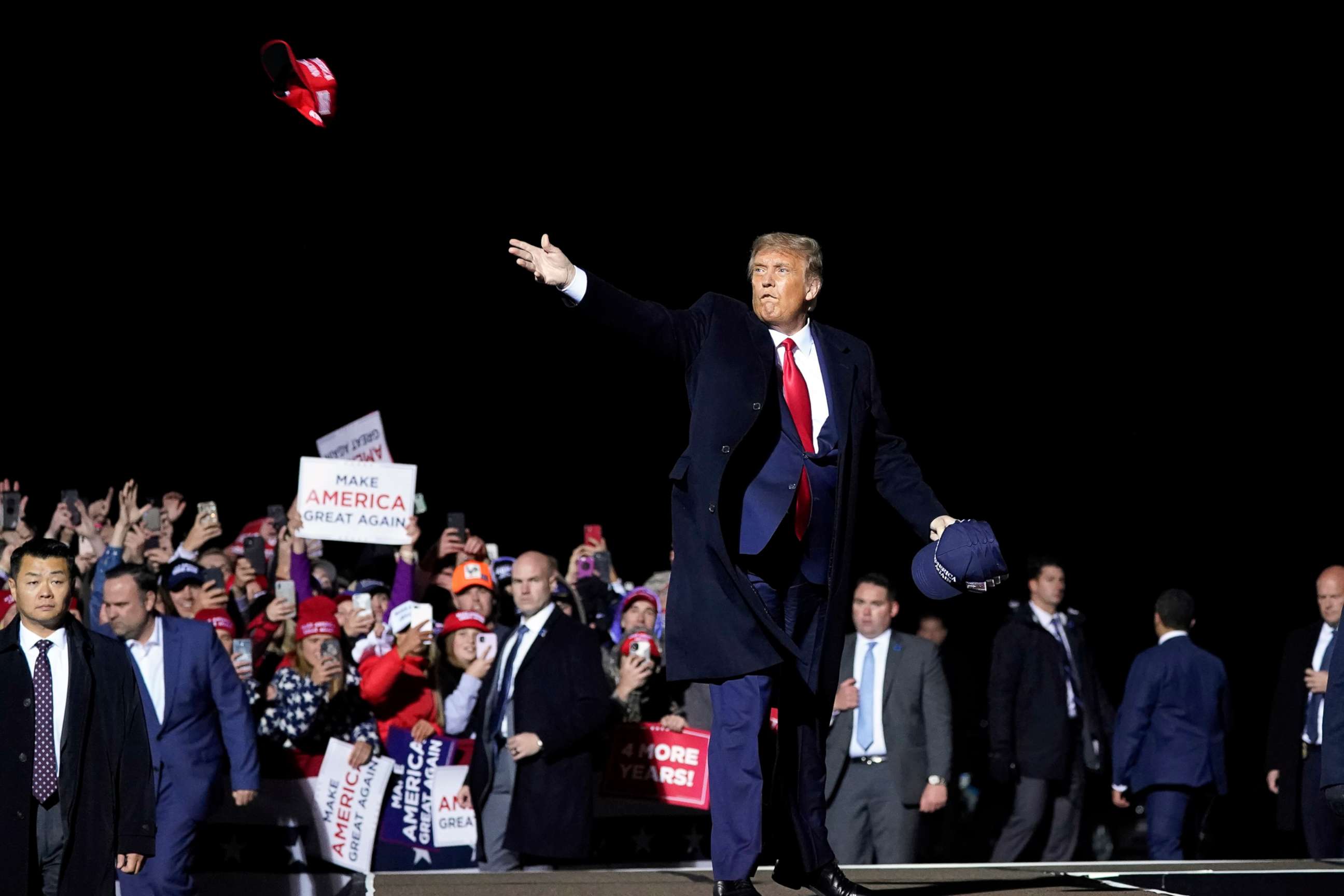
On the return trip to Washington, Hope Hicks, a senior aide to the president, fell ill aboard Air Force One. Unable to deplane, Hicks isolated herself in a cabin. She tested positive for coronavirus the next day.
Thursday, Oct. 1
The president's busy week of travel continued Thursday with a visit to his golf club in Bedminster, N.J., for a private fundraiser. After Hicks' positive test -- not announced publicly but leaked to reporters Thursday evening -- several White House aides decided not to travel with the president, according to The Associated Press.
Just over 100 supporters attended the high-priced, closed-door fundraiser Thursday afternoon, according to sources familiar with the event.
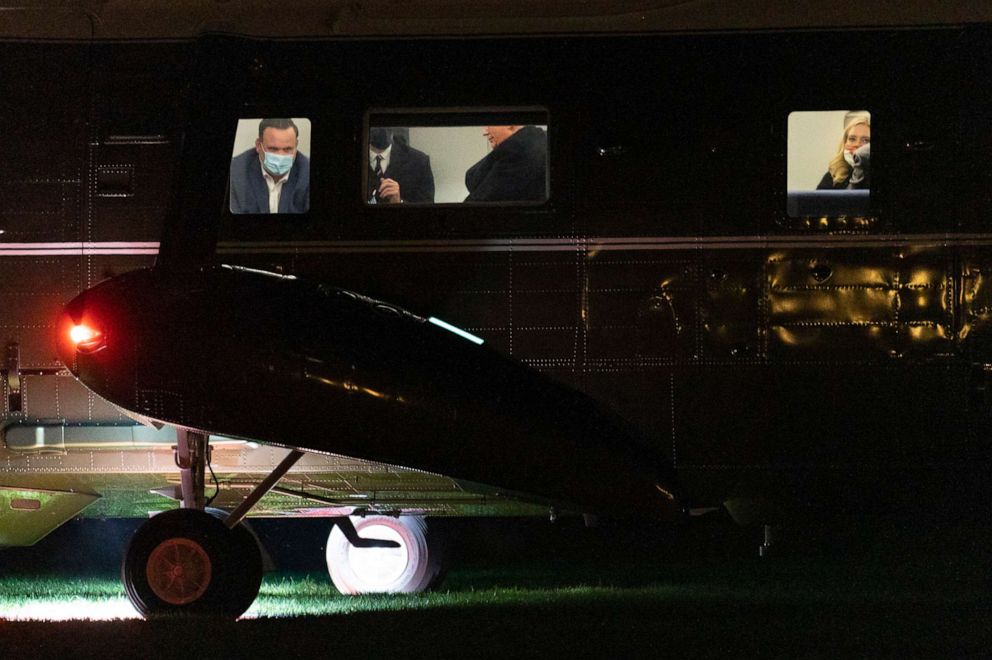
Sources said Trump and his senior staff were aware Hicks had tested positive earlier in the day for the coronavirus. One source said Trump did not come within 6 feet of guests and guests themselves were tested prior to joining the president. The senior aides who joined the president on his trip had been in close contact to Hicks as well, according to the sources. According to social media posts, very few attendees at the event were spotted wearing masks.
The event included a roundtable discussion, a photo line with the president and a reception, according to a local New Jersey media report. Highest-tier tickets cost $250,000. For a photo with Trump and tickets to the reception, the price was $50,000. Attendees are being contacted for contact-tracing.
A Republican National Committee spokesperson told ABC News: "As usual, the event site was professionally cleaned and sanitized prior to the event. The White House Medical Unit and U.S. Secret Service evaluated all attendees in order for them to gain access to the event. Attendees tested negative for COVID-19 on the day of the event, completed a wellness questionnaire and passed a temperature screening."
On Friday, health officials in Somerset County said they had "begun the contact tracing investigation to determine the potential risk of exposure to attendees and staff at the facility to COVID-19."
As reports about Hicks' diagnosis emerged Thursday evening, Trump called in to Fox News' Sean Hannity to discuss the development.
"I just went out for a test, they just do it, it'll come back later, I guess," Trump said. "At the first lady also, because we spend a lot of time with Hope -- and others. So we'll see what happens."
The president later tweeted that he and the First Lady had begun their "quarantine process."
Friday, Oct. 2
Shortly after midnight on Friday morning, Trump tweeted that he and the First Lady had tested positive for the virus. Both of them said they felt mild symptoms on Friday, suggesting the virus may have been in their system for several days, according to Brownstein.
"With a diagnosis on October 1, we can presume that the president was likely infected three to five days ahead -- though possibly longer -- pushing the timeline to trace contacts all the way into the prior weekend," Brownstein said. "This places a massive public health burden to identify and test contacts with the hope of identifying the source."
On Friday afternoon, administration sources confirmed that at least one junior West Wing employee has tested positive.
ABC News' Ben Siegel, Katherine Faulders, John Santucci, and Will Steakin contributed reporting.
This report was featured in the Monday, Oct. 5, 2020, episode of “Start Here,” ABC News’ daily news podcast.
"Start Here" offers a straightforward look at the day's top stories in 20 minutes. Listen for free every weekday on Apple Podcasts, Google Podcasts, Spotify, the ABC News app or wherever you get your podcasts.
